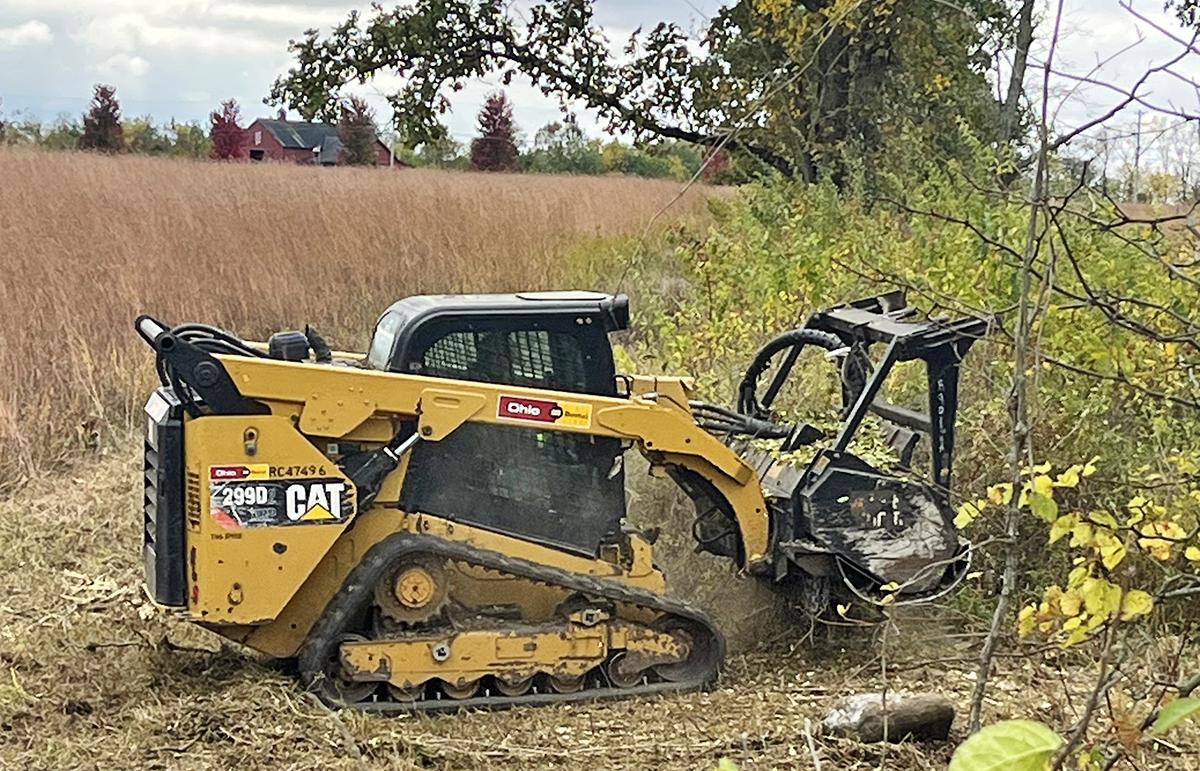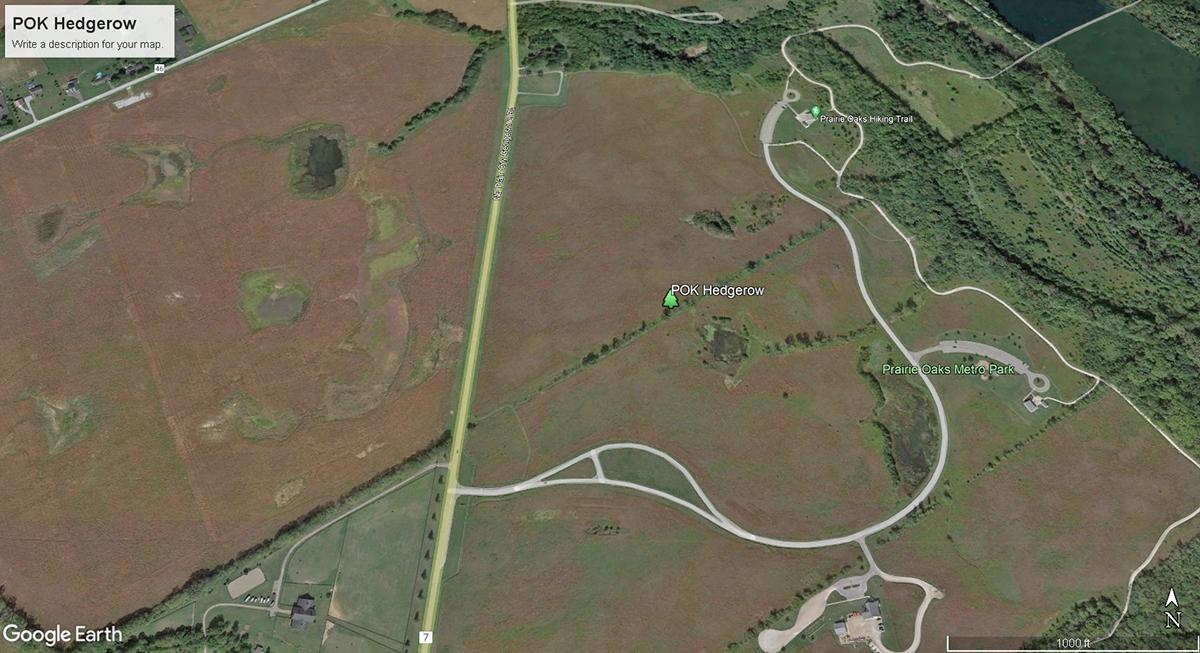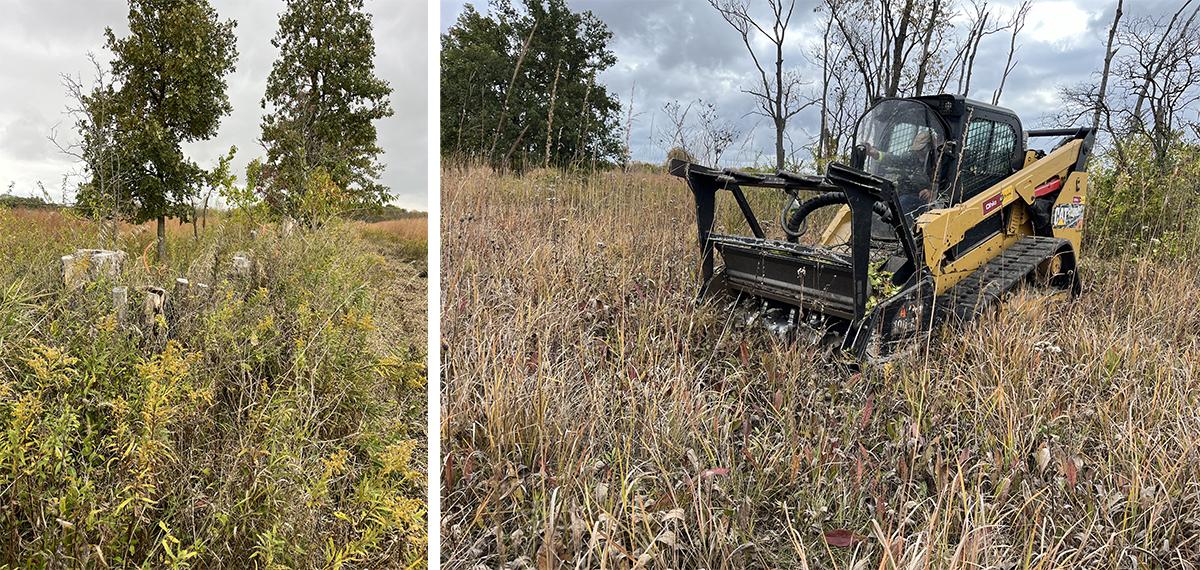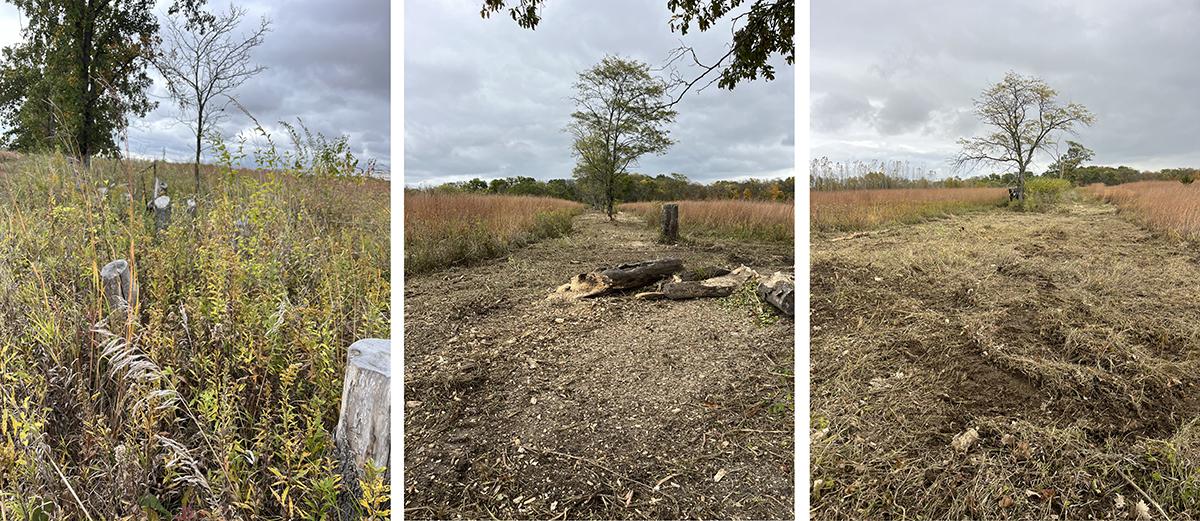ANDREW BOOSE
Aquatic Ecologist

A 700-yard-long, 30-foot-wide hedgerow, at Prairie Oaks Metro Park, had been on the list for removal since the park opened in 2002. But it survived for two decades. The hedgerow (sometimes called a fencerow) became a site for chainsaw training, strike team events and volunteer outings. So it served an important purpose for Metro Parks’ resource management. Now, finally, it is gone! The hedgerow’s old soft stumps and over-grown weedy invasive plants were cleared by resource management staff using a mulcher mounted to a tracked machine. Some of the previously thinned areas had already began to be recolonized by prairie plants. The swamp white oaks, a couple of wild plums and hazelnut shrubs that were able to hang on, were also kept.
Why put this much time and effort into clearing out an old hedgerow? Well, while it does provide habitat for common birds and a few transient mammals, this particular hedgerow was interrupting a nearly 266-acre wet and upland prairie restoration area. This interruption in such habitats can thwart grassland birds like bobolinks and dickcissels from finding nesting sites.

Metro Parks manages many types of habitats, including other hedgerows and farmland fencerows. These habitats are often made up of mature trees, some native shrubs and a lot of non-native invasive species. We use many tools in our toolbox to manage these areas. Sometimes they are left alone as the land around them becomes restored into habitat and park land. We have used park staff, volunteers and hired contractors and equipment to help bring the species composition back to a healthy habitat for our native wildlife and plants to thrive. Other former and managed hedgerows can be found at the Wagtail Trail at Battelle Darby Creek Metro Park, the prairies at Scioto Grove Metro Park, plus the wetlands at Slate Run and Pickerington Ponds Metro Parks.

The use of hedgerows dates back nearly 900 years in England. Here in Ohio, hedgerow building continued with some of the earliest settlers, who used rocks and plants to separate their livestock and vegetables. Early hedgerows were primarily made of tightly-planted shrubs and stone. Later, as saw mills began to operate, board fences became common. Around 1880, wire fencing became popular, when Joseph Glidden, a farmer from Dekalb, Iowa, patented barb wire. Shortly thereafter, the woven wire fence was also patented. Outside of a few rock walls here and there in the parks, one finds this woven wire fence in many places throughout the park district. It is not unusual for one to discover a hidden wire fence immediately prior to doing an in-depth, face-first investigation of the soil just beyond it.
These old hedgerows were collection points for a whole host of plants, from stately trees, spreading shrubs and prairie plants seeking refuge from the plow and grazing live stock. Prior to no-till drilling farming practices, the hedgerow was one of our favorite places to find remnant prairie plants that we see and harvest regularly in the Metro Parks. As no-till drilling became the norm, these smaller plants were killed off by herbicide spraying. And then the onset of the invasive plants such as honeysuckle, autumn olive and more recently callery pear began to out compete all but the mightiest plants for its place in the hedgerow. Multi flora rose, another despised invasive plant, was once purposely planted as a living hedgerow, until it got loose in pastures and became a living nightmare to contend with. More often than not, today’s hedgerows in the Metro Parks have become a repository of invasive plants, which produces copious amounts of seed that spread, to ill-effect, throughout our reforestation, grassland and prairie restoration areas.


Very interesting. Would luv to have similar removal efforts targeting disturbed riparian corridors where invasives now flourish along the Greenway Trails. Unfortunately city of Columbus Rec & Parks long ago discontinued their invasive management program. Thank you Andrew and team.
Enjoyed the article. It is great to hear that some changes are happening. I look forward to seeing the changes and effects on wildlife. As a regular visitor, I wonder if there will be a foot trail available for the area.
Also, I hope the improvement plans include the wetlands. What once, historically, used to provide fantastic habitat for nesting and migrating shorebirds, rails and ducks, the wetland is sadly engulfed with cattails. It has been sadly neglected. The Franklin county side has been maintained for great recreational and nature interest, but the Madison County side is very limited. So much land, including the Morgan Rd. area has no public access or observational opportunity.